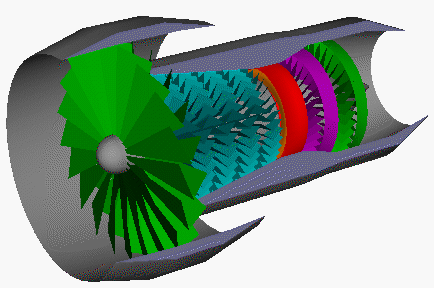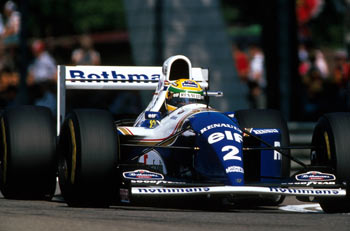flynfrog wrote:... make them neutral with no angle of attack
After reading that my first thought was: "well, if weight is the enemy, why wouldn't you make them have lift? After all, the drag is already there..." Care to ellaborate, flyn? Perhaps the enemy is not weight but mass?

Which leads me to an interesting question: what's more "energy efficient" for carrying a weight? A wheel or a wing? I guess that, as in most engineering questions, the answer is: it depends.
Yes, I know the car is fixed to the track using tethers and loops attached to the bottom, so it could be counterproductive to try to make it "float" a little.
Btw, the wheels width is fixed, the wings are mandatory, sidepods also. Here is a sketch of the rules (all the dimensions shown are fixed between certain margins) that should give you an idea that the dimensions are fairly restricted:


I was thinking about a diffuser for the rear end, not around the canister, a diffusser like the one in F1 cars, to diffuse (duh!) the flow under the car and minimize eddies at the back end.
About the faring at the exit of the canister, in the photo you posted, I would study a little how rocket nozzles work, after checking what's the the pressure of the gas exiting the canister.
You know, a
Laval nozzle works by having a source of gas with fairly high pressure (around 3 times atmospheric pressure) and then
by choking the gas exit: the gas reach supersonic speed converting thermal energy into kinetic energy. I wonder if you could add some kind of nozzle to the canister in such a way as to optimize its impulse power.
I understood from the rules that you have to make the car of a solid, continuous block, so the design had to be devilishly clever, btw...
Besides the nozzle choking the gas, another characteristic of rocket engines is that some of the push comes from the combustion chamber but
most of it comes from pressure against the walls of the nozzle. I have no idea if this kind of thoughts can be applied to a
cold pressurized gas container like the CO2 canister is, as opposed to an engine that burns a
hot propellant, like a rocket.
However, if these thoughts apply, AND if the exit from the canister is small, I think its push could be greatly incremented by adding a wider nozzle that "supports" or "takes" the pressure that comes from the adiabatic expansion of the gas (that is, in english, the gas gets colder after the choking point).
So, in the end, I don't know if besides
aerodynamic issues that can be improved, somebody here is able to "re-equalize" (that's a Formula One joke) your
engine. Altough, on a second thought, knowing the people here, most of them will suggest you to increase the rpm of the canister...

(that's another lame joke).
The picture you posted also reminded me of the fairings of turbofan engines.
So, given that, as flyn, I haven't read regulations in detail, I have to ask: could it be legal to use some of the gas from the cartridge to turn a secondary fan that drives a main fan, bypassing some of the air around the canister case, like a turbofan engine works?
I don't know what kind of bypass ratio would be efficient at the speed of the car (1 second for 20 meters, isn't so? So, it's like 80-100 kph or what?)
Turbofan engine: the green parts are the turbo fan. The other coloured parts would be replaced by the gas canister.

Of course I don't think the rules allow that.

Anyway, those are a couple of ideas that say that if you could extract some heat from the gas or "equalize" the speed of the CO2 with the speed of the "rocket powered" car you could use the energy of the gas in a more efficient way.














